The Anti-Candida Diet: 11 Rules, Foods List & Tips
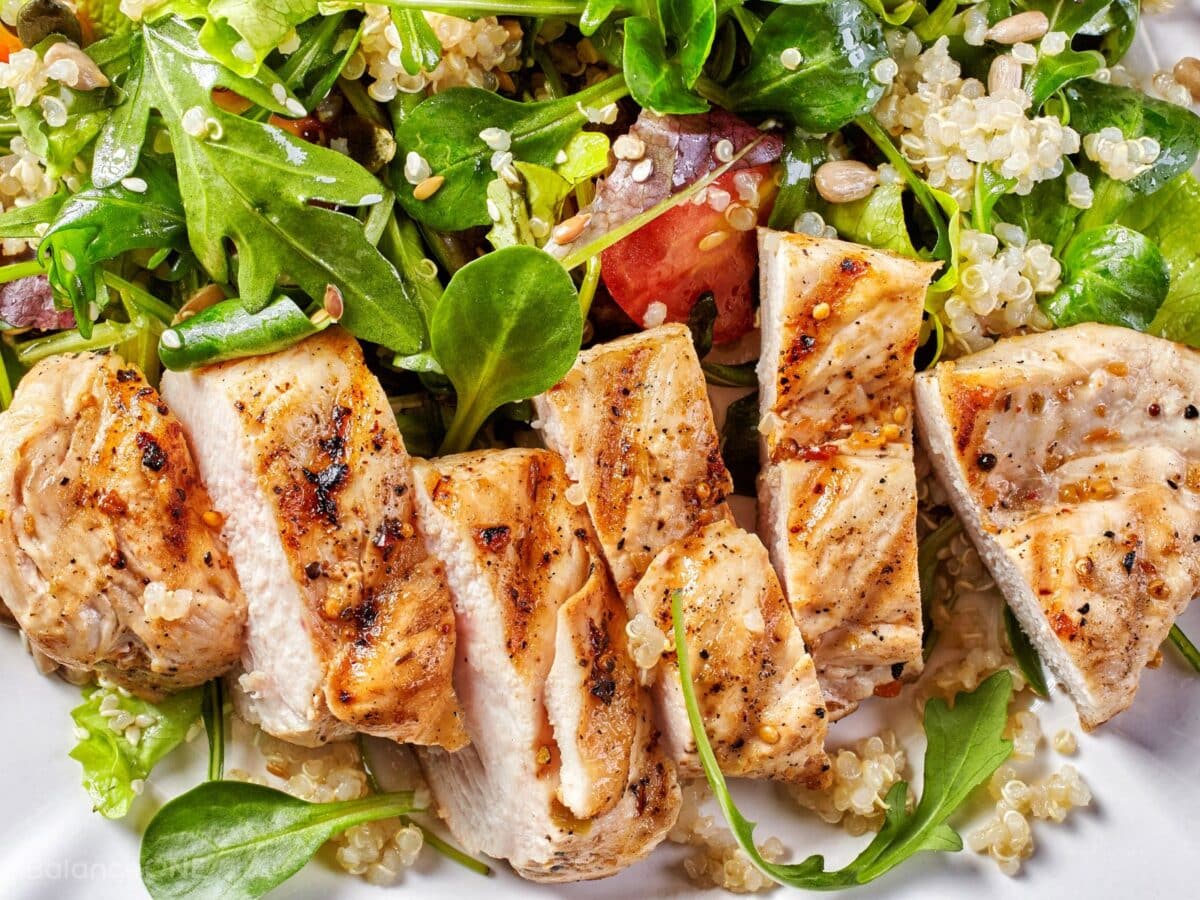
Key takeaways
- The Anti-Candida Diet is a low-sugar, anti-inflammatory way of eating built around non-starchy vegetables, healthy proteins and fats, fermented foods, and a small selection of low-sugar fruits.
- Follow 11 simple rules as your checklist, use our foods-to-eat and foods-to-avoid lists, and keep meals repeatable so you can stay consistent for 8–12 weeks.
- For extra support, many readers pair the diet with a time-release probiotic and a multi-antifungal formula taken together, plus sleep, stress, and hydration habits.
The anti-Candida diet is a key part of preventing or reversing Candida overgrowth. It lowers added sugars, reduces inflammation, and adds foods with probiotic or antifungal properties. Over time, that combination can help you recover your gut health.
As your digestion improves, many people notice fewer symptoms. This can mean less bloating and gas, more regular stools, and steadier energy. Some readers also report fewer recurrent yeast infections as their routine settles.
The Anti-Candida Diet is a low-sugar, anti-inflammatory plan that supports good gut health. It features non-starchy vegetables, a few low-sugar fruits, non-glutinous grains, fermented foods, and healthy proteins. You’ll use simple rules and repeatable meals to stay on track.
Why does this approach matter so much? Your body hosts an enormous community of microbes, especially in the gut. In fact, these microbes outnumber our own cells by the trillions (source).
Research continues to show how the microbiome influences immunity, digestion, glucose control, and even cardiovascular markers (source; source). There’s also growing evidence of gut–brain links related to mood and stress (source).
When this balance is disrupted, opportunists like Candida albicans can overgrow. That shift is linked with symptoms such as bloating, indigestion, nausea, diarrhea, and gas (source). More generally, Candida symptoms can include fatigue and low immunity.
A poor diet is a major driver. Eating lots of added sugar and pro-inflammatory foods creates the conditions Candida likes (source). The good news is that diet changes work in the other direction.
By following a low-sugar, anti-inflammatory plan and choosing the right foods, you can make your gut less friendly to overgrowth. Combine this with consistency, and you have a clear path forward. The 11 rules below are the checklist we recommend.
How to follow the Anti-Candida Diet
Use the 11 principles as your daily guide. Keep meals simple so you can repeat them during busy weeks. Bookmark our food lists and recipes for quick planning.
If you want a structured start, review the Candida Cleanse and our diet overview. Many readers also add a time-release probiotic and a multi-antifungal blend for a multi-angle approach. Balance ONE’s Time-Release Probiotic and CandAssist fit naturally alongside the rules.
- Avoid added sugars
- Eat non-starchy vegetables
- Eat low-sugar fruits
- Eat lots of fermented foods
- Minimize your caffeine
- Eat gut-healing foods
- Enjoy healthy proteins and fats
- Stay away from gluten
- Cut back on your alcohol
- Maximize your nutrition
- Drink lots of water
1) Avoid added sugars
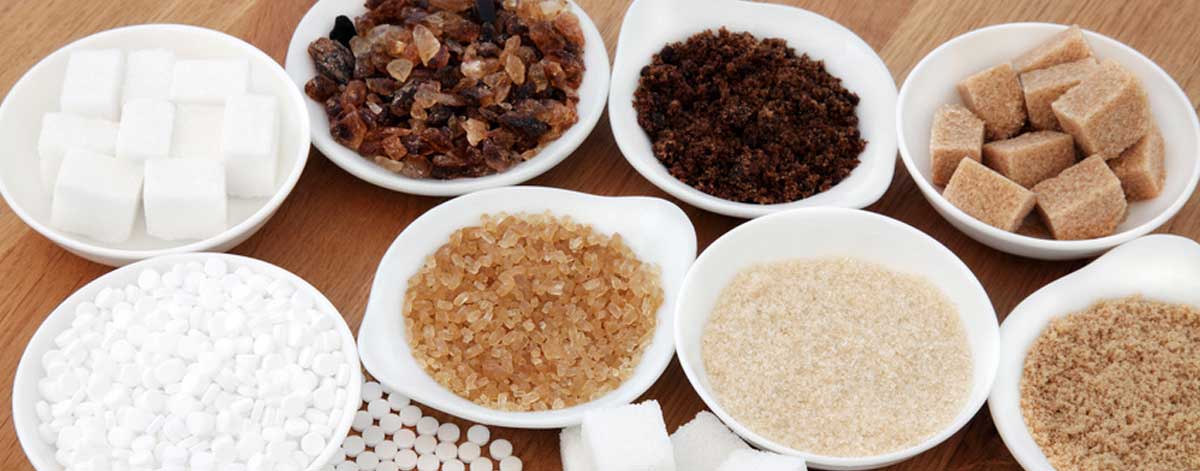
There are more than 50 different names for sugar. Check labels and you’ll spot them in cereals, condiments, sauces, and even “healthy” snacks. Some brands split sugar into several types so it appears lower in the ingredient list.
Sugar matters to Candida for two reasons. It fuels growth and the switch to a more invasive form known as hyphae (source). It also feeds the sticky biofilms Candida uses to hide and hang on (source; source).
Added sugar isn’t only about Candida. High intake is linked to heart problems, weight gain, and diabetes risk (source; source). Many people also notice mood dips with sugary habits (source).
Where do added sugars come from most often? A large analysis highlights sodas and energy drinks, desserts, juices, candy, and sweetened dairy as key sources (source). The rest hide in breads, cereals, sauces, and dressings.
On your Candida cleanse, scan labels and plan swaps. Make your own dressings, use plain yogurt, and keep whole foods front and center. A few go-to recipes help a lot.
Try these low-sugar alternatives from our recipe hub. They fit right into a real-life week and curb cravings fast. Pick one to make today and one to batch-cook for later.
Cinnamon Coconut Crisp Cereal
Candida Coleslaw
Coconut Flour Crackers and Grissini
Coconut-Almond No-Bake Balls
Avocado Lime Tart
Cool Almond Milk Smoothie
2) Eat non-starchy vegetables
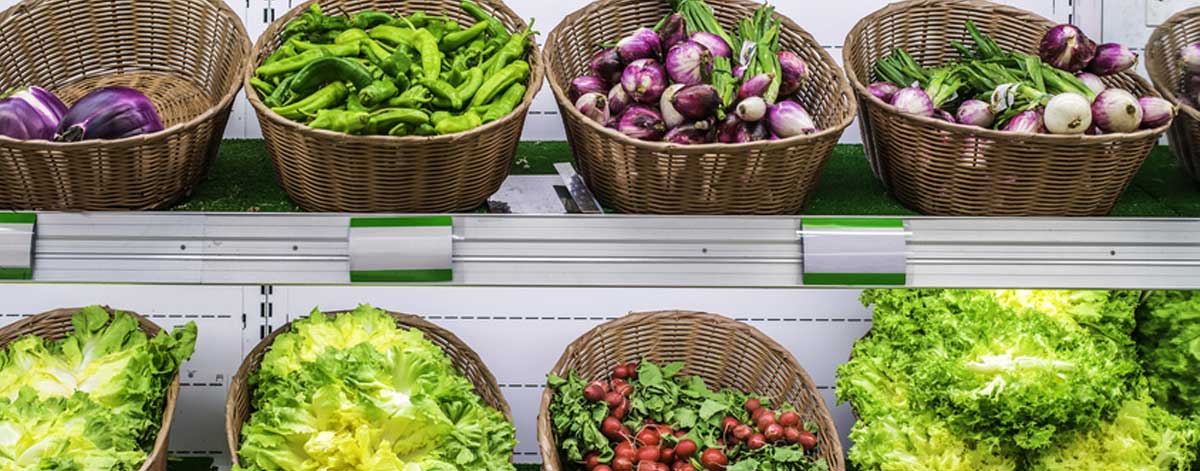
Vegetables should be the backbone of your plate. Favor leafy greens and crucifers like spinach, kale, broccoli, cauliflower, and cucumber. These are nutrient-dense and low in net carbs.
Starchy vegetables like potatoes, yams, corn, winter squash, beets, and peas raise blood sugar more quickly. They sit on our Maybe list for portion-controlled use. Keep the focus on green, lower-starch options most days.
Don’t go zero-carb. Extremely low-carb eating can push you into ketosis, and Candida can use ketones as fuel (source). Aim for balance, not extremes, while you rebalance your gut.
A few higher-starch vegetables bring unique benefits. Rutabaga has interesting antifungal properties in lab settings (source). Jicama and turnips can play similar roles without derailing your plan.
If you’re unsure, calculate net carbs. Subtract fiber from total carbs to get a quick estimate. Use this to keep meals satisfying without spiking blood sugar.
Build your rotation with these veggie-forward recipes. They’re easy, fast, and family-friendly. Keep at least two on your weekly menu.
Mediterranean Zucchini Dip
Buffalo Cauliflower Florets
Rutabaga Nachos
Satay Chicken Bowl
3) Eat low-sugar fruits
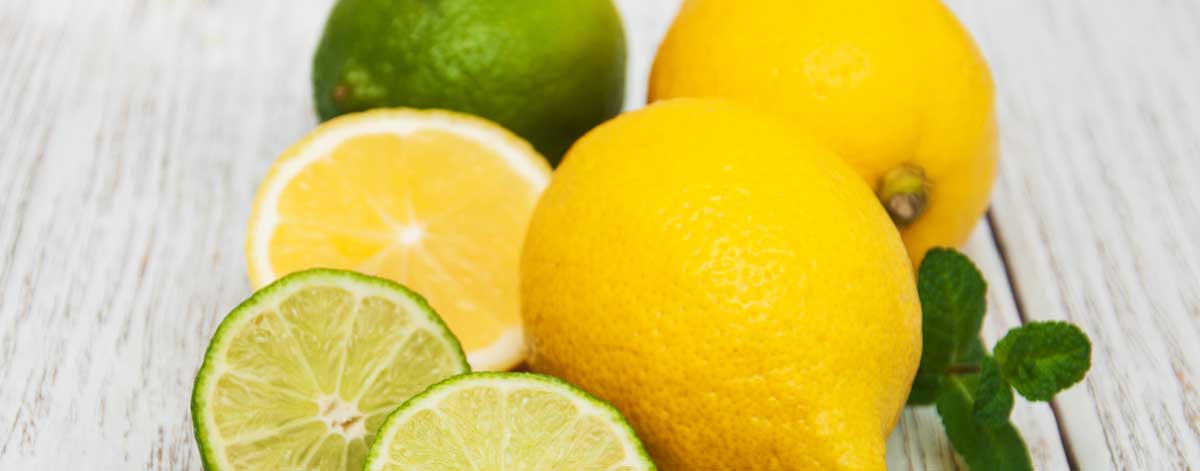
Choose fruits with fewer net carbs. Lemons, limes, avocado, and berries are great everyday picks. If you include apples or pears, watch portions and pair with protein.
Different sugars behave differently. Sucrose and glucose can encourage Candida growth and biofilm activity in lab models (source; source). Fructose is handled a bit differently and can be less supportive of growth in some cases (source).
Net carbs matter most for daily choices. For example, 100g of blackberries has about 5g net carbs while 100g of banana has ~20g. Stick with lower numbers while you’re rebalancing.
Whole fruit brings fiber, water, and micronutrients. Fruit juice and dried fruit are easy to overdo, so keep them off your list for now. Save sweeter fruits for reintroduction later.
Use recipes to make fruit feel special without the sugar spikes. These are reader favorites and easy to prep on a Sunday. Keep portions modest and enjoy slowly.
Strawberry Muffins
Apple Walnut Yogurt Parfait
Gluten-Free Avocado Pancakes with Lemon Parsley Butter
4) Eat lots of fermented foods
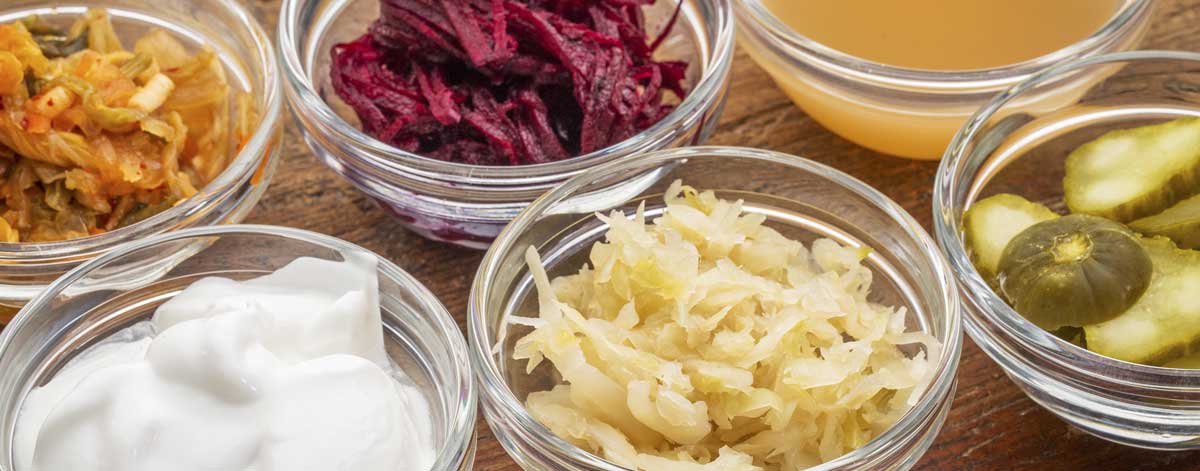
Fermented foods add live bacteria that support balance. Yogurt, kefir, sauerkraut, and kimchi are easy daily options. Start small and build up as you feel comfortable.
Look for “live cultures,” “probiotic,” and “unpasteurized” on labels. Many jarred products are vinegar-pickled instead of truly fermented. The flavor is similar, but the microbiology is not.
Watch added sugars, especially in yogurt. Plain, unsweetened yogurt is best while you’re rebalancing. You can add cinnamon or berries for taste without a big sugar hit.
Making your own can be fun and inexpensive. Homemade yogurt and sauerkraut are simple starting points. If you’re ready for more, try kefir or kimchi next.
Here’s a quick list to guide your shopping. Pick one or two to use every day. Rotate for variety over the month.
- Yogurt
- Kefir
- Sauerkraut
- Kimchi
- Kombucha
- Kvass
- Pickles
- Olives
- Apple Cider Vinegar
- Natto
- Miso
For supplement support, many readers add a time-release probiotic. Balance ONE’s Time-Release Probiotic is designed to release gradually so more bacteria reach the intestines. See our probiotics guide for how to choose.
5) Minimize your caffeine
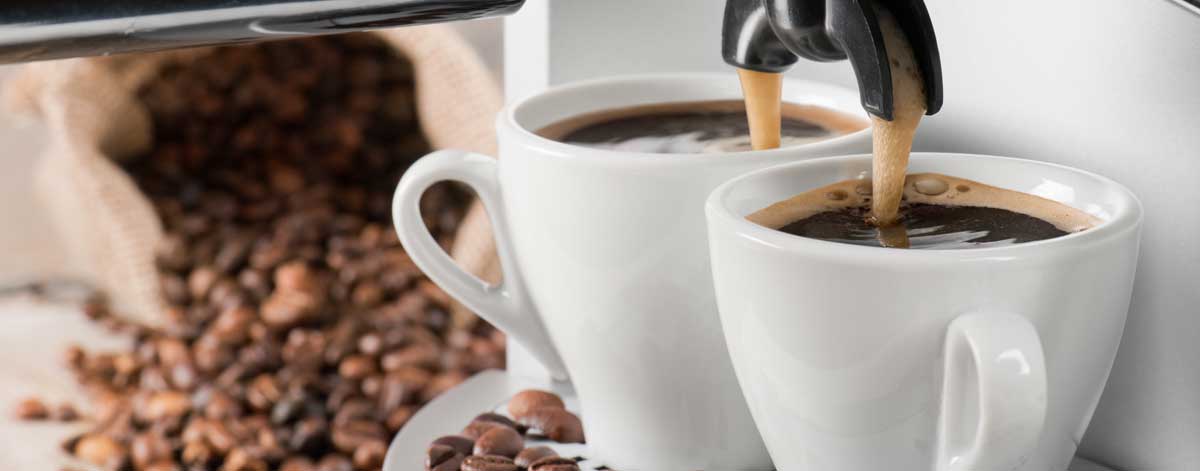
Caffeine isn’t always a problem, but it can irritate some people’s digestion. Coffee can activate pathways linked to gut inflammation in certain contexts (source). Coffee on an empty stomach may also bother the gut lining (source).
There’s discussion around zonulin and intestinal permeability as well. Some models suggest caffeine can nudge zonulin higher, which is associated with a leakier gut (source; source). If you’re sensitive, try cutting back.
Too much caffeine can also lead to burnout-style fatigue. Stress and sleep loss undermine digestion and immunity (source). Keep coffee to the morning and taper by early afternoon for better sleep (source).
6) Eat gut-healing foods
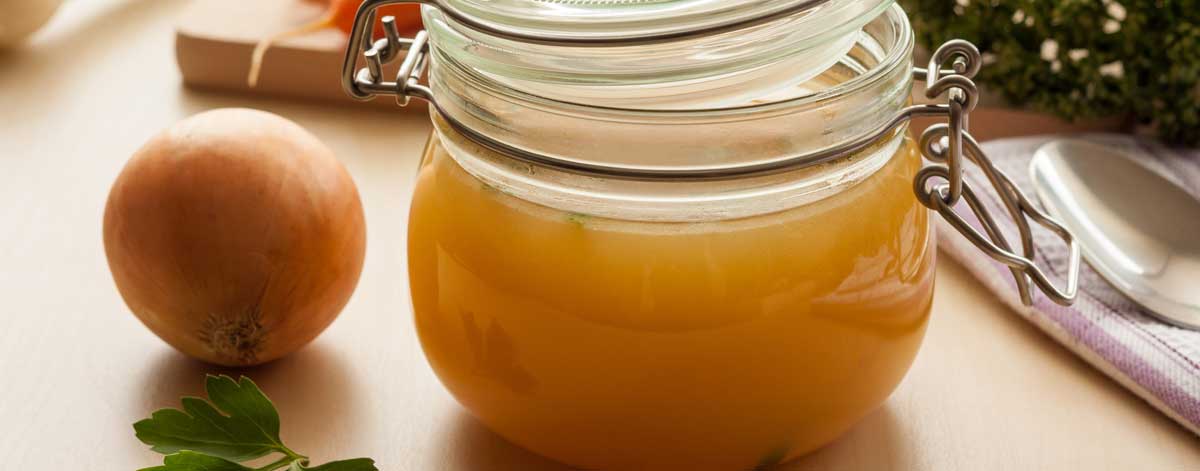
The Anti-Candida Diet reduces inflammation and supports the gut lining. That means eating fewer ultra-processed foods and more whole, simple meals. It also means adding foods that actively soothe and nourish.
If you’re already eating vegetables, proteins, healthy fats, and ferments, you’re on the right track. A few targeted foods can help even more. Consider adding at least one of these.
Bone broth
Bone broth is easy to digest and packed with minerals, collagen, and amino acids. The gelatin it contains can help protect the intestinal wall in animal models (source). Glutamine, one of its amino acids, has been studied for supporting barrier integrity and reducing oxidative stress (source).
Make it in a slow cooker and freeze portions for the week. Sip it warm, use it in soups, or cook vegetables and grains with it. Keep the recipe simple to highlight the benefits.
Cabbage juice
Simple cabbage juice is a classic gut-friendly choice. It’s rich in compounds that support detox pathways and antioxidant defenses. Many readers find it soothing when digestion feels off.
Juice it fresh or blend lightly steamed cabbage with broth. Start with small servings to see how you respond. Add a squeeze of lemon for flavor.
Coconut oil
Coconut oil contains fatty acids with antifungal activity, including caprylic acid (source). It also appears to have anti-inflammatory effects in some contexts (source).
Use coconut oil for sautéing and baking. Some readers also use it topically for rashes and as a short swish for oral comfort during oral thrush. Keep amounts moderate and watch how you feel.
Gut-supportive supplements
Alongside food, certain supplements may help soothe and support the gut lining. Start low, add one at a time, and track how you feel. Space soothing fibers away from medications to avoid affecting absorption.
L-glutamine. This amino acid fuels intestinal cells and is linked with support for barrier integrity and reduced oxidative stress in the gut (source). Many people mix the powder in water and increase gradually based on comfort.
Zinc carnosine. A complex of zinc and L-carnosine studied for maintaining the health of gastric and intestinal mucosa. Reviews suggest potential support for mucosal protection and tight junction function (source). It’s usually taken with food.
Slippery elm extract. This herb contains mucilage that forms a soothing, gel-like coating on contact with moisture. It’s often used before meals to calm irritated tissues. Take it away from medications and other supplements.
Other gentle options sometimes used include DGL licorice, marshmallow root, and aloe vera leaf. Choose one or two to try and keep notes on timing and tolerance. Always check labels if you’re pregnant, nursing, or using medications.
For a simple all-in-one approach, Balance ONE RevivaGut combines a blend of 10 gut-supportive ingredients. It’s designed for easy, consistent use alongside your Anti-Candida meals and probiotic routine.
7) Enjoy healthy proteins and fats
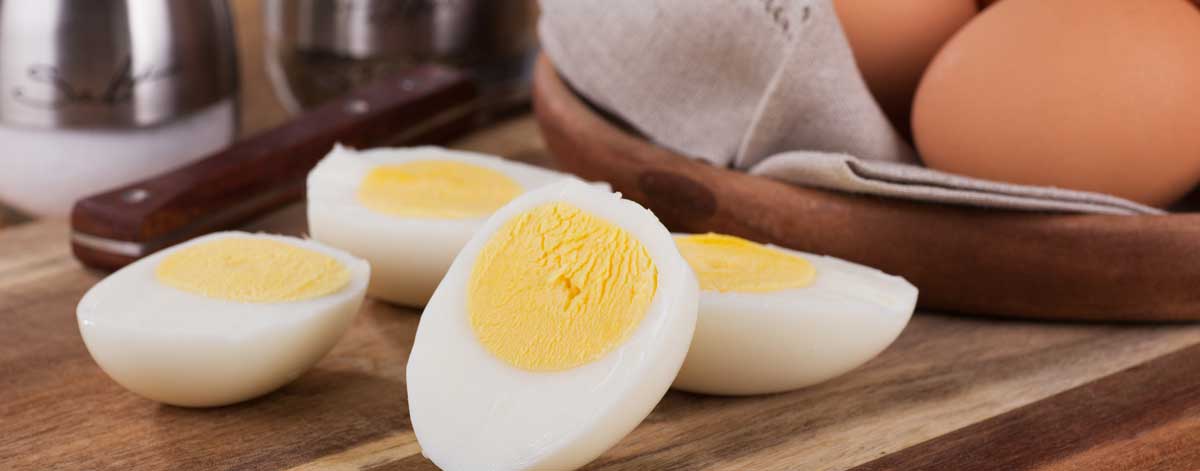
As you lower refined carbs, you might lose weight quickly. That’s not the goal here, but it can happen. Replace missing calories with protein and healthy fats.
Choose fresh cuts of meat or poultry without added sugars, nitrates, or sulfites. Processed meats like bacon, ham, and deli slices are best minimized (source). Favor white meats and fish for everyday meals.
Eggs are a nutritional powerhouse and easy to cook. Select organic and free-range when possible. For fish, smaller species like sardines and herring tend to be lower in contaminants.
Wild-caught salmon is a strong choice for Omega-3s. These fats are associated with healthier inflammatory markers in many settings (source). If you’re vegetarian, lean on nuts, seeds, legumes, and protein-rich pseudo-grains like quinoa.
Cook with olive oil, coconut oil, butter, or ghee. Simple fats make meals satisfying and steady your energy. Keep ultra-processed oils off your list.
8) Stay away from gluten

Gluten affects more than just people with celiac disease. Research links gluten exposure to higher zonulin, a protein associated with a leakier gut (source; source).
Intestinal permeability has been discussed alongside autoimmunity, IBS, and food sensitivities (source; source). If your gut is already irritated, gluten can make things feel worse.
Removing gluten can help your gut repair and reduce inflammation. It also nudges you toward real, nutrient-dense foods. That’s a win for energy and cravings.
Avoiding gluten is easier than ever. Pseudo-grains like buckwheat and millet are widely available. Just be cautious with sugary “gluten-free” treats.
Try these gluten-free recipes to get started. Baking at home lets you control ingredients and sweetness. Keep a loaf or batch of crackers ready for the week.
Coconut Bread
Leek and Roasted Garlic Focaccia Bread
Coconut Flour Crackers and Grissini
Buckwheat Breakfast Muffins
9) Cut back on your alcohol
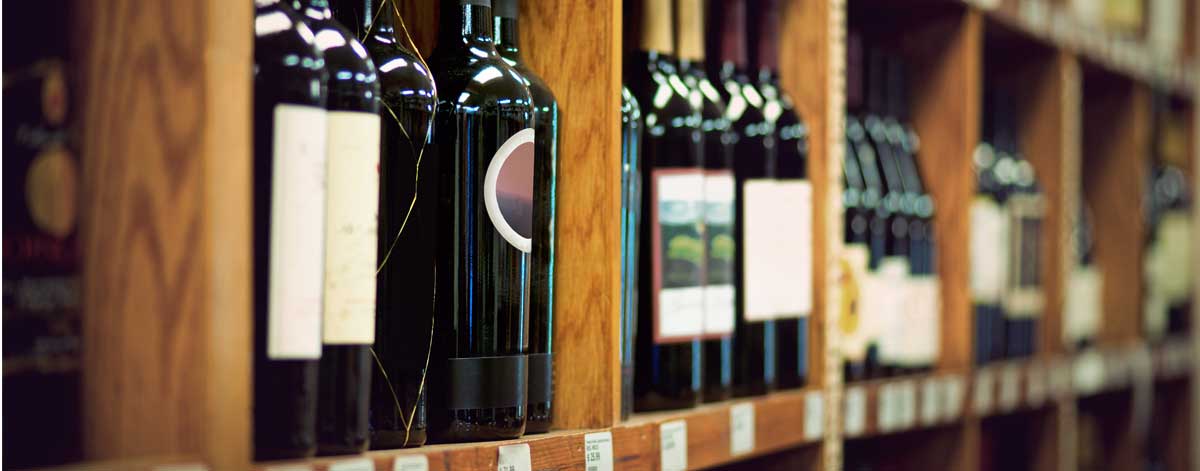
Alcohol can irritate the gut lining and destabilize blood sugar. It is also tied to changes in gut barrier function. If Candida has already stressed your gut, alcohol can compound the issue.
Candida in its invasive form is also linked with permeability concerns (source) in the intestinal lining. Reducing alcohol gives your gut a better chance to recover. Many readers take a full break for a few weeks.
Alcohol can also affect immunity. Some studies show a brief spike in immune activity after heavy drinking, followed by a slump (source). That’s not ideal when you’re rebuilding balance in your gut and immune system.
10) Maximize your nutrition
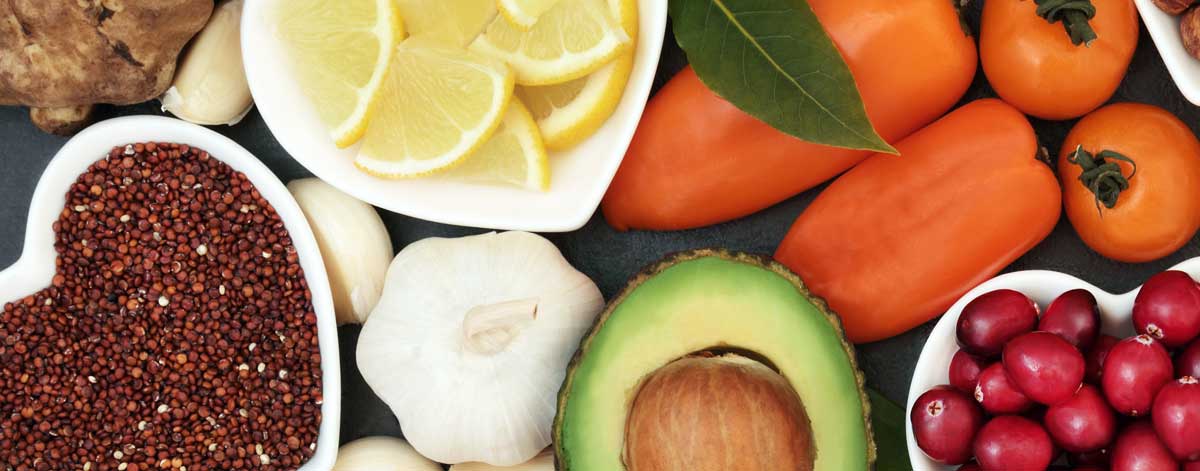
When you leave processed foods behind, your nutrition improves fast. Vegetables, fruits, proteins, and ferments deliver the vitamins and minerals your body craves. You’ll likely notice steadier energy and better focus.
You can push these benefits further with a few simple habits. For example, buy organic when you can to reduce pesticide exposure. Several analyses suggest organic choices can lower residues and raise certain nutrients (source).
Local, seasonal produce is tasty, practical, and generally more nutritious. Imported produce is often picked underripe to survive shipping. Local options can develop fuller flavor and nutrient profiles before harvest.
Some foods are just nutritional powerhouses. Fermented foods, organ meats, eggs, seaweed, and sprouts bring hard-to-get nutrients. Sprinkle them into your weekly plan.
Consider adding a supplement routine that matches your meals. A time-release probiotic is a simple daily base. For antifungal support, a combined formula covers multiple angles at once.
Balance ONE’s CandAssist includes complementary natural antifungals in delayed-release capsules for convenience. If you prefer an all-in-one path, the 3-Month Candida Elimination Kit bundles staples so you can focus on cooking and routine.
11) Drink lots of water
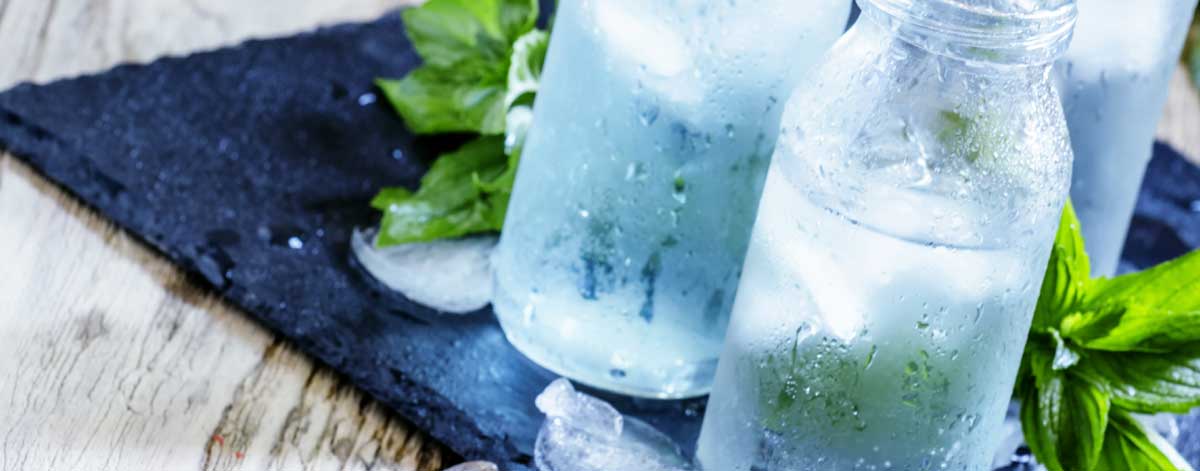
Hydration supports digestion, mood, and focus. Even mild dehydration is linked with headaches, fatigue, and lower concentration (source). Keep a bottle handy and sip throughout the day.
Water helps whether stools are loose or slow. If you’re constipated, fluids plus fiber and movement can help. If stools are loose, you need water to replace losses (source).
Exercise raises your fluid needs. Dehydration can affect temperature control and performance (source). Make water your default source of hydration and flavor with lemon or mint if it helps.
Quick foods snapshot (table)
Use this table while shopping and planning. Keep portions flexible and pair carbs with protein and fat for steadier energy. Let your digestion guide the pace.
| Category | Eat freely | Maybe (watch portions) | Avoid for now |
|---|---|---|---|
| Vegetables | Leafy greens, broccoli, cauliflower, zucchini, cabbage, rutabaga | Carrots, turnips, winter squash | French fries, corn, potato chips |
| Fruits | Berries, lemon, lime, avocado | Apple, pear (with protein) | Fruit juice, dried fruit |
| Proteins & fats | Eggs, poultry, fish, tofu, olive oil, nuts | Red meats | Deep-fried fast foods |
| Ferments | Yogurt, kefir, sauerkraut, kimchi (live cultures) | Kombucha (check sugar) | Sweetened yogurt |
| Grains | Quinoa, buckwheat, millet | Gluten-free baked treats, brown rice | Glutenous grains |
FAQs
Is this diet keto?
No. It’s low-sugar and moderate-carb, not zero-carb. Ketosis isn’t required and may not be helpful for everyone (source).
Can I eat dairy?
Many people include plain yogurt and kefir for probiotics. If dairy bothers you, pause it and try fermented non-dairy options instead.
Do I need snacks?
Not always. If you do, try nuts, veggie sticks with dips, or yogurt with cinnamon. Keep snacks low in sugar and high in protein or fat.
How long should I stay on this?
Many readers follow the plan for 8–12 weeks, then reintroduce foods slowly. Track symptoms, digestion, energy, and sleep as your guide.
Which probiotic should I choose?
A time-release formula helps more live bacteria reach the intestines. See our guide to probiotics for selection tips.
Do supplements replace the diet?
No. Supplements work best alongside a steady diet. Most people keep the basics long after symptoms improve.
The Bottom Line
To reverse a Candida overgrowth, start with a low-sugar, anti-inflammatory diet. Build meals around non-starchy vegetables, healthy proteins and fats, fermented foods, and small amounts of low-sugar fruits. Keep caffeine and alcohol modest while you rebuild balance.
For extra support, many readers add a time-release probiotic and a multi-antifungal formula used at the same time. Balance ONE’s Time-Release Probiotic fits easily into a morning routine. CandAssist combines several natural antifungals in delayed-release capsules to simplify timing.
If you prefer a ready-made path, the 3-Month Candida Elimination Kit bundles essentials so you can focus on cooking, sleep, and stress. For day-to-day help, keep using our Foods to Eat, Foods to Avoid, and recipe pages. Consistency over a few weeks adds up, so keep at it!


3-Month Candida Elimination Kit Start Your 3-month Candida Cleanse
This Candida Kit contains all the supplements recommended on the Candida Diet:
- LIVER ONE to process and remove the toxins created by Candida.
- CANDASSIST to inhibit and weaken the Candida colonies in your gut.
- PROBIOTIC to replace the Candida yeast with probiotic bacteria.
Plus... the CANDIDA DIET RECIPE BOOK with 50+ low-sugar recipes


Is there a gluten free bread you recommend
Try our coconut bread! https://www.thecandidadiet.com/recipe/coconut-bread/
You are doing amazing work! Thanks for sharing your wonderful post❤️. I recently had to be prescribed antibiotics for a sinus infection, so I already knew I would get a yeast infection because I always do whenever I have to take antibiotics. Diflucan gives me a lot of relief (so happy 😊 I googled ‘Nocnd247’ and got it). What many people may not know is that antibiotics can cause other medical issues to develop while taking them, such as diarrhea, nausea, stomach cramps, excessive gas, yeast infections, etc. Taking antibiotics this time resulted in me having a vaginal and anal yeast infection. I hate itching worse than being in pain!
Thanks for all your help, I read it over and over to try to get it ingrained in my head!! Putting recipes on here helps a lot! so thank you again!
it is a life long process to keep it under control. remember no sugar
This article was great information, I’ve been fighting Candita for over 3 years, 9 doctors, only a naturopath doctor recognized the issue. The diet is real hard, I don’t crave sweets but I love my potatoes and a glass of wine.
Since reading your article my life has transformed . I was clogged with mucus from my bronchi to my head, had asthma for 40 years. ALL GONE with candida diet !!!! I am so angry with doctors !!!!
I was surprised – but pleased – to read that Stevia is an acceptable form of sugar whilst trying to defeat Candida. I try to minimise sugar anyway, but using this as an alternative would open up more possibilities. Thank you.
Hi,
Wonderful information, so comprehensive. I’m just starting to put your suggestions into practice and was wondering if you could provide this document in PDF form.
I don’t know about others, but I love printing things out and having the info on my table. I already spend enough time looking at a computer screen..
Thanks for letting me know!